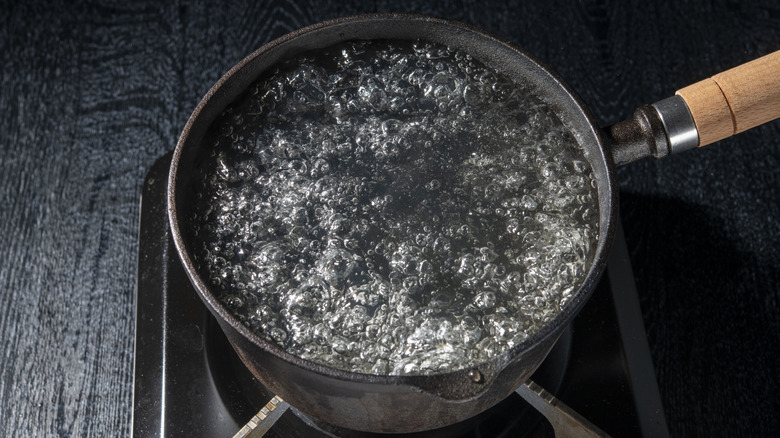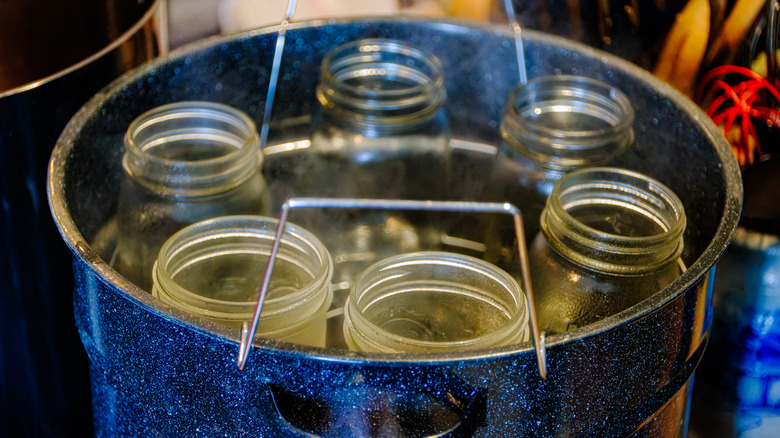Before Canning Water, Make Sure You Know This
When you think of canned water, you might imagine small, gray, government-issued cans of drinking water stocked in a Cold War-era fallout shelter, stashed away in case of nuclear attack. While this threat isn't what it used to be, emergencies are still emergencies, and canning is still the safest way to store emergency drinking water for years to come. Luckily, you don't need a federal supply drop to get some.
It's natural to wonder why canned water is still a thing in the age of plastic bottles. What you have to remember, though, is that plastic containers slowly leach chemicals into water, which will noticeably affect the taste after several years (to say nothing of long-term health concerns). Fortunately, water that's been properly canned in mason jars doesn't have this problem.
Just like when you're canning food, however, you should make sure your water is fully clean and drinkable before sealing it up. This means no added electrolytes, which do improve hydration but also pose a spoilage risk when canned.
Tips for safely canning drinking water
There are two safe methods for canning at home: pressure canning and water bath canning. While the former requires a specific machine, the latter can be done with any deep kitchen pot that allows for 2 inches of water above the top of your cans, making it a natural choice for beginners. Misunderstanding these methods is one of the biggest mistakes to avoid when canning at home, but luckily, either one will work for canning water.
There are specific steps you should follow for safe water bath canning (which we explain here), and they start with submerging clean, open jars on a rack in a pot of water and bringing them to a simmer. The jars must be hot in order for the canning process to work, though this step also sanitizes them. An unsanitary jar will make your canned water taste off, if not actually spoil it.
For best results, use filtered water for your canning project. Contaminants are canning enemy number one, and a high-quality water filter will eliminate many of them. For added precaution, you can also boil the filtered water, let it cool, and filter it again. This layered process will remove more foreign material, including some microplastics.

